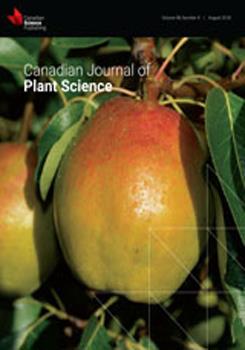A modified Bacillus thuringiensis (Bt) cry1Ac gene was introduced into poplar ‘Shanxin’ (Populus davidiana × Populus bolleana) by Agrobacterium-mediated transformation. Seventeen cry1Ac transgenic lines were regenerated. The integration and expression of the cry1Ac gene in these transgenic lines were analyzed by polymerase chain reaction (PCR) and reverse-transcription quantitative PCR, respectively. Variable amounts of cry1Ac mRNA accumulated in different transgenic plants. The expression of Cry1Ac toxin protein in transgenic plants was analyzed by enzyme-linked immunosorbent assay, the concentration ranged from 0.12 to 21.00 μg g-1. The concentration of Cry1Ac protein was highly consistent with mRNA amount in each transgenic line. Leaf section bioassays were conducted using the larvae of both gypsy moth (Lymantria dispar) and fall webworm (Hyphantria cunea). Those plants, except lines 10 and 11, caused rapid mortality of all gypsy moth and fall webworm larvae with almost no defoliation, while lines 10 and 11, with Cry1Ac protein concentrations of 0.12 and 0.76 μg g-1, respectively, provided relatively weak insect protection. Results of insect bioassays indicate that Cry1Ac protein expression over 1.3 μg g-1 consistently produced high insect mortality for both species of moths. The correlation between concentration of Cry1Ac protein and insect mortality is important to understand for managing insect pests with transgenic plants. Transgenic poplars with high insect resistance will be useful tools for managing Lepidoptera pests of these trees.
How to translate text using browser tools
27 March 2018
Efficacy of Cry1Ac protein against gypsy moth and fall webworm in transgenic poplar (Populus davidiana × Populus bolleana) by bioassay
Liping Ding,
Yajuan Chen,
Hongzhi Wang,
Jianhua Wei
ACCESS THE FULL ARTICLE
It is not available for individual sale.
This article is only available to subscribers.
It is not available for individual sale.
It is not available for individual sale.
Cry1Ac
insect bioassay
poplar
Transgenic plant





